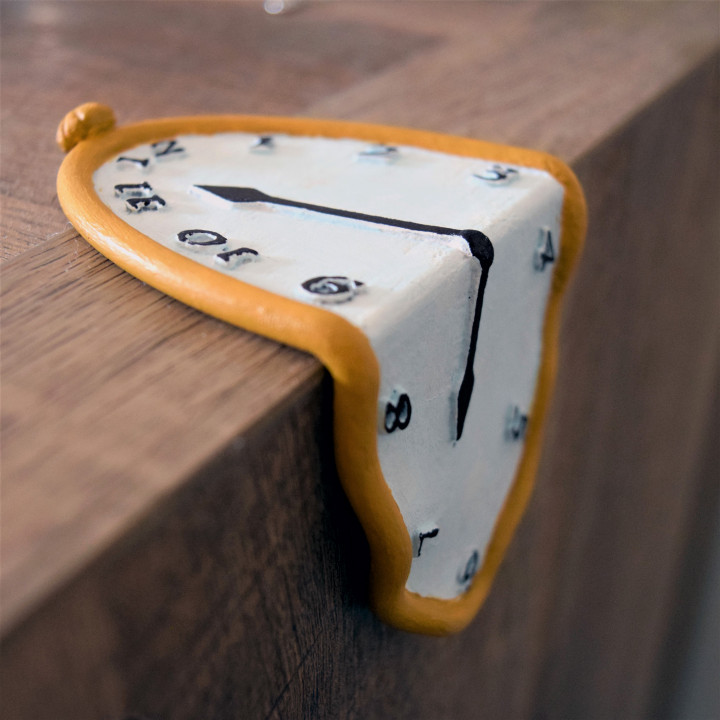
- Persistence of vision 3d clock serial#
- Persistence of vision 3d clock drivers#
- Persistence of vision 3d clock software#
The motor has its own independent 5V (2.5A rating) power supply so there was no problem there.īudgeting was also an issue since we are only allowed to use $70 in addition to what we have lying around. As a result, we never had any brownouts except for when the brushing fails (explained in more detail below). The PI filter ensures that slight current variations caused by the noisy brushing are removed. The regulator goes through a PI filter and then to a 3.3V regulator and the rest of the 5V devices.

The 9V goes straight to the LEDs and the 5V regulator. As a result, we decided to use a brushing system to supply the power which is explained in more details under brushing.Įssentially to power the PCB boards, a power adapter is used to pass 9V (1.1A rating) to the spinning board. Duracell batteries have a 0.83amp-hour rating at 1A current draw, so the batteries would have died way too quickly. That would have meant the total current being drawn would have been around 1500mA. This number was actually even higher in our originally calculations since the datasheet on the LEDs said that they each need about 10mA (2mA ended working just as well), or 960mA for all 96 to turn on. This means that we need to draw about 673mA in order for the PCB boards to work. The LEDS take about 173mA from a 9V power supply. The XBee that we use for the wireless communication takes about 50mA from a 3.3 linear regulator.
Persistence of vision 3d clock drivers#
The total current needed by the microcontroller unit, the EEPROMs, and the LED drivers is about 450mA from the 5V regulator. Another reason why we did this is because two separate power sources get rid of the noise that might have occurred if the motor power supply was used to power the LEDS as well. As a result, we decided to use two power supplies to power the motor and the LEDs. Since we need to power a motor and also 32 RGB LEDs (96 individual LEDs), the current being drawn is tremendous. More details on how this all works can be found under Hardware Design. Rom control makes animations simple to do while the direct control allows us to display a clock, dynamically generated messages (Gaming capability is also being looked at). The main circuit board is also unique since it can either read data from the external EEPROMs (rom control) or be controlled directly (direct control). This would make it extremely simple to switch between the 2D vs 3D propeller clock that we envisioned. The main circuit board will do all the calculations necessary to figure out what LEDs to turn on while the secondary board will only have LEDs. In order to make our multipurpose propeller clock, we decided to make two main components. They work right out of the box and only needs to be plugged into the laptop and our device. At the same time it is also extremely easy to use.

Persistence of vision 3d clock serial#
This device was extremely helpful since it allows us to have wireless serial communication. The serial interface that we ended up using is the XBee. At the same time, we decided to make a friendly GUI with JAVA so that any user can intuitively do the updates. To improve upon the device we found, we wanted a way for the propeller clock to communicate with a computer and decided to use the serial protocol for this. We found the idea for the persistence of vision device (also known as a propeller clock) here. Images can be uploaded and managed from a computer connected wirelessly, as can the firmware. Additionally, our design is fully customizable.

While we only had time to make the 2D display, our design makes it easy for the user to swap the LED array for a different one. Our original goal was to make two different LED arrays, a 2D version with RGB LEDs and a 3D version that uses monochrome LEDs. We set out to make a very modular multipurpose design. Often they only display one image or animation and usually have no interactivity. While many POV projects have been designed before, they tend to be very static. Due to the fact that human eyes can only render so many images per second, the fast spinning LEDS seem like a solid display. A POV display is a display created by rotating an array of LEDs rapidly. We ended up primarily concentrating on looking at unusual display technologies and decided that a persistence of vision(POV) display would be a good balance.
Persistence of vision 3d clock software#
In deciding on a project we looked for a challenge that would have a good mix of hardware and software problems. We set out to make an easy to interact with, highly custimizable POV display


 0 kommentar(er)
0 kommentar(er)
